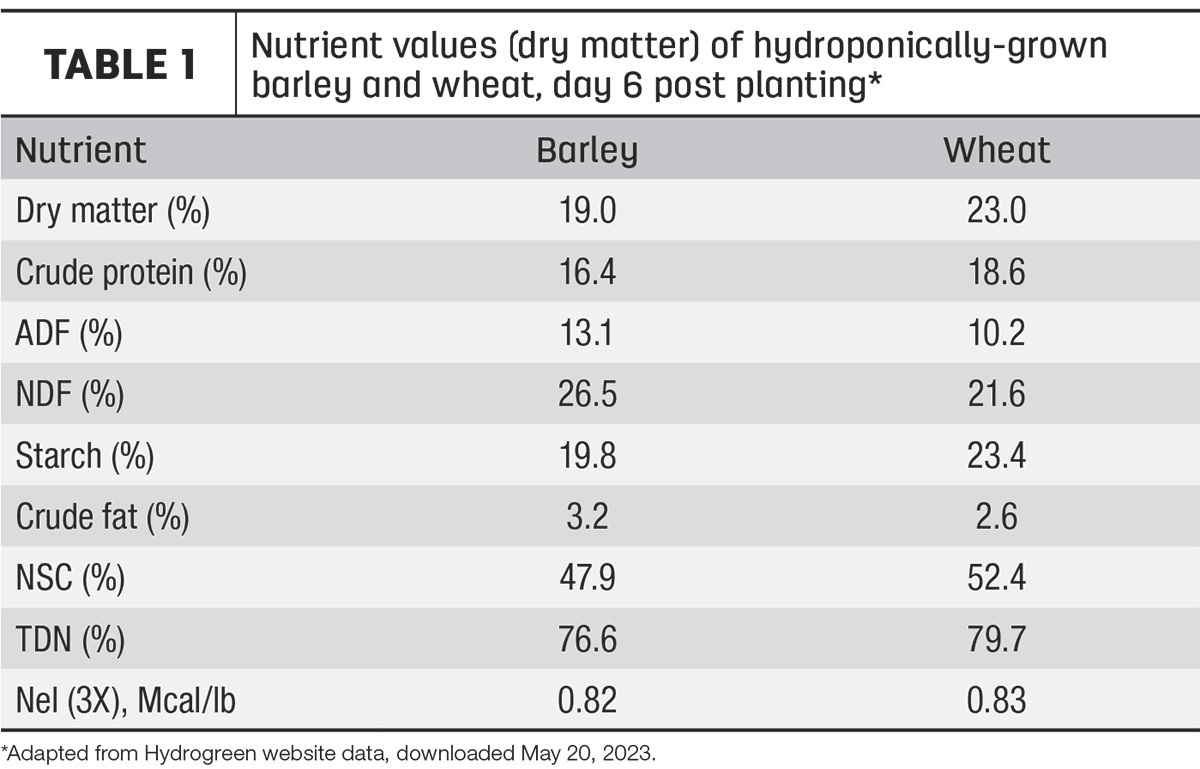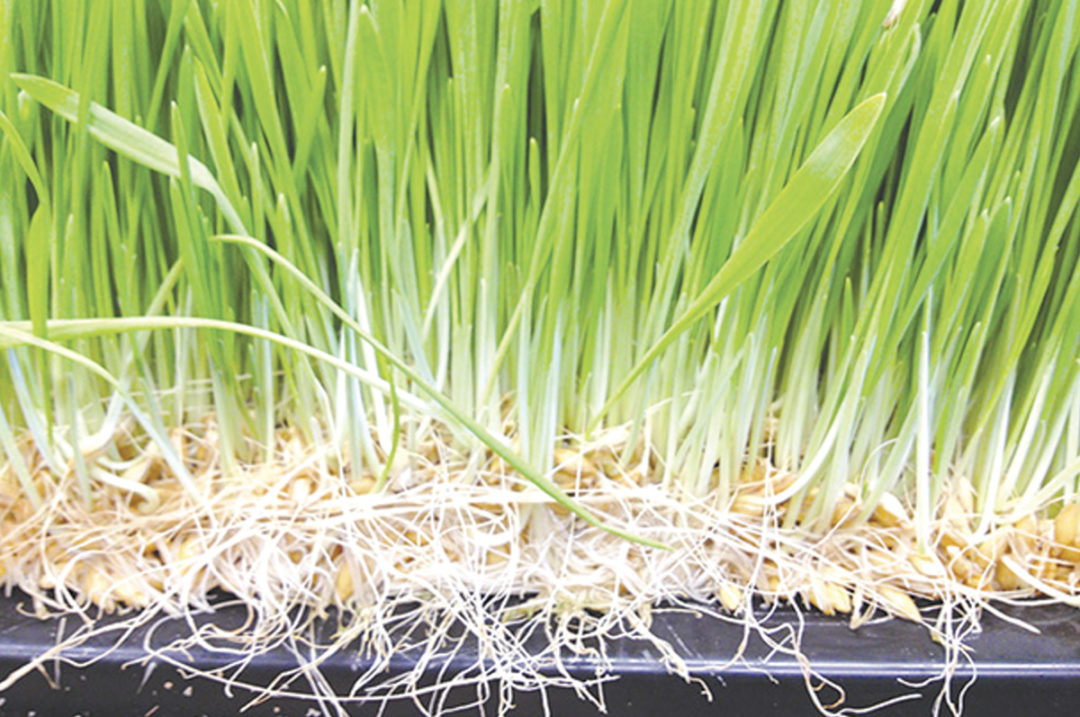Since dairy producers started milking cows, the search has been ongoing for better, more economic feeds and forages to promote more cost-effective performance while working toward better rumen health, health in general and reproduction. Obviously, this is a tall order, made more challenging by the fact that animal requirements are variable as are forage and grain production environments, particularly weather conditions.
We focus on producing and delivering a certain amount of dry matter, properly balanced to each individual animal each day with the intent of this dry matter being the best cost it can be and supporting the production, health and reproduction listed above.
Of this ration dry matter, the forage component makes up a very significant proportion, hopefully 50% or more. Ideally, the forages we incorporate into the dairy rations fed will have good digestibility and be high quality, consistent, cost-effective and readily available year-round. Every dairy producer and nutritionist knows that all these factors are variable. While some producers are also very good farmers and can produce quality forages, this never happens 100% of the time. Nutritionally, forages are variable. Whether grown or purchased, nutrient variability creates ongoing challenges for consistent volume and component production.
Secondly, forage production is expensive, especially when all required inputs are considered: land, seed, fertilizer, fuel, pesticides, labor, equipment, taxes, etc. For the producer, all these resource costs are seldom considered, especially land and labor costs. Nonetheless, all these costs and more are incurred when producing needed forages.
Enter hydroponic growing systems
In recent years, the concept of growing a hydroponic forage component for the dairy has come on the scene. Originally, the idea of a hydroponic growing system (HGS) was immediately dismissed as completely impractical, exceptionally expensive and too labor intensive. Plus, when we think of hydroponics, we often think of how vegetables we buy at the local chain superstore are grown and of their lack in flavor and food quality.
However, as technologies have advanced, hydroponic systems have been put in place on dairies around the world. These range from small production units capable of feeding one or two cows per day up to much larger commercial units capable of supporting the daily production of forage material for thousands of animals.
So what are we growing?
Various research studies have shown that young, fresh forages are an excellent nutrient source and can provide large amounts of highly digestible soluble protein and fermentable carbohydrates. The limiting factor for these forages (wheat, oats, rye, ryegrass, etc.) is that they are only available for a limited period. Some farms take advantage of forages such as these by grazing pastures of these plants either ongoing or for limited periods each day. The problem with this is that there is no consistency in intake from cow to cow. Secondly, as noted before, the availability of these pastures is limited, available only for a few months out of the year.
Hydroponically grown forages commonly include sprouted barley, wheat, rye, etc. (there are a fairly large number of forages that can be used in these systems). The way these systems work, these plants are “harvested” after a short growth period, in some cases in as little as 10 days. Subsequently, the entire plant is harvested, providing a highly digestible forage source high in protein and energy from soluble carbohydrates. Included as a component of the diet, this can result in an increased microbial protein yield as well as increased predicted metabolizable protein and energy yields. Table 1 illustrates nutrient values from hydroponically grown barley and wheat on day six post-planting.

Especially for barley, day six is considered the ideal harvest point. Plants in an HGS grow more rapidly and evenly than conventionally grown plants because water and nutrients are supplied directly to the sprouting seed and developing plant. Numerous studies have shown that 1 pound of unsprouted seed will produce 8 to 10 pounds of forage in about seven days.
These materials are high in moisture, as very young, immature plants are. There will be some variation depending on the exact plant species used. In addition to the advantageous nutrient density, HGS are very palatable and may also modify eating behavior and dry matter intake (DMI). Some research has shown improvements in DMI. One study, while not showing an improvement in intake, did report increases in chewing and rumination time, both of which are consistent with increased saliva production and greater rumen buffering.
Some earlier systems – and even current, smaller units used on smaller farms – have used these sprouted forages as their entire feeding program. More recently, larger farms have incorporated a hydroponic system in a manner to provide only part of the DMI, i.e., as simply another ingredient in the feeding program.
There are several advantages to the use of HGS-produced forages, including consistency of supply and year-round yields of a high-quality feed ingredient shown to improve production. This may provide an ability to incorporate highly digestible nutrients that may reduce the need for higher starch inclusion, which can improve rumen health and overall animal well-being. Finally, because of the high levels of digestibility and the improvements this can make in the ration, data are available showing HGS forages can help reduce cow methane output.
But this comes at a cost
Nutrition, performance and rumen health all appear to show benefits from the use of HGS forages. Unfortunately, this comes at a cost. To utilize these forages, a dairy must establish the system. They can range from small units capable of providing feed for a few cows up to very large commercial units that can provide dry matter for 1,000 head or more.
HGSs are highly sophisticated, fully automated fodder-production systems with controlled environments and are immune to natural weather variations. The required water, light, temperature, humidity and aeration are fully controlled by sensors. Often a provision for recycling water is available to reduce water requirements. As such, an HGS comes with a substantial investment in housing and the equipment itself.
There are several companies that manufacture and sell these systems. A couple of these include FodderTech located in Sandy, Utah, and Hydrogreen in Sioux Falls, South Dakota. Both companies sell their systems in the U.S. and internationally. For specifics on cost, the producer is directed to these companies.
Traditional forage production requires a major investment for land, machinery and equipment, infrastructure required for pre- and post-harvesting, labor, transportation, fuel, lubricants, fertilizers and pesticides. Hydroponic forage production requires only seed and water as production inputs with potentially lower labor inputs. Hydroponics minimize post-harvest losses, with no fuel required for harvesting and post-harvesting processes. Moreover, in hydroponic systems, it takes only seven to eight days to develop from seed to fodder while it takes 45-60 days under traditional systems.
Conclusions
Hydroponically grown forages may have a place in dairy feeding, particularly as we work toward more-consistent, higher-quality forages. Equipment costs are high and may outweigh the benefits, but each farm needs to evaluate the economics of such an investment. The economics of the HGS may be changing as so many typical input costs (land, equipment, labor, etc.) continue to increase. Also, consider that not too long ago, robotic milking systems and rotary parlors were considered excessively expensive.
Note: Any mention of a company or product is informational only and not considered an endorsement.







